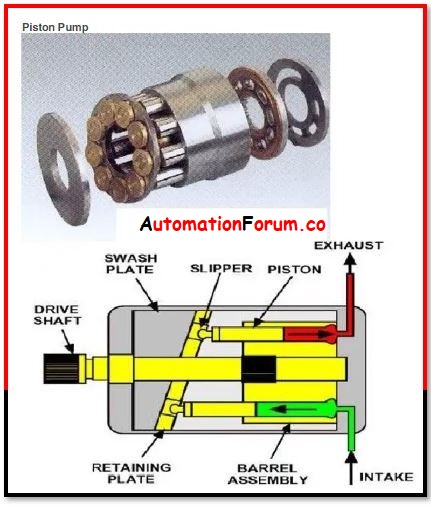What is vibration isolation? Why vibration isolation is needed

The process of isolating an object such as isolating machinery from the source of vibration is called vibration isolation. When motorized equipment such as electric motors, fans, or pumps is mounted to a solid structure then the chances of transferring energy from the equipment to the structure in the form of vibration are high. These vibrations could create noise and damage the equipment too. The vibration isolation will be very useful for many industries.

What causes vibration?
Vibration can be seen in motorized equipment, and it is created by the back and forth movement or oscillation of the machines and components. The vibrations can be created in an industrial plant by a drive motor, pump, compressor, etc. The vibrations are usually created by the rotation motion of the equipment parts or by the electrical supply frequency. The vibration could happen because of the following.
- Rotational shaft speed
- Electric motor rotor bar frequencies
- Electrical supply frequencies
- Gear meshing frequencies
- Impeller blade pass frequencies
- Bearing frequencies
- Belt frequencies
- External frequencies
What is the function of the vibration isolator?
The vibration isolator would decrease the transmitted vibration magnitude to the equipment. The required feature for an isolator is resilient load supporting means and energy dissipating means.
What is vibration damping and how does a vibration damper work?
Damping is the process in which the vibrational energy will be converted into heat or sound energy. A vibration damper would take energy out of a system and reduce the vibration.
A damper would act as the brake for the equipment mounted on the isolator, damping would reduce the motion by using friction. Friction damping occurs when the friction between the sliding parts slows down the movement between parts, viscous damping occurs with resistance to fluid or airflow.
Damped and un-damped vibration
In damped vibration energy will be lost during oscillation, while in un-damped vibration there won’t be any energy loss during oscillation.
How does vibration isolation work?
If the equipment is properly isolated then it would only create less vibration which would be negligible. In order to achieve vibration isolation, isolators are used and this device would be placed between the equipment and the structure so that it can create a low natural frequency support system for the equipment.
Classification of vibration isolation
Passive vibration isolation
Mostly the passive isolation system is comprised of a mass, spring, and a damper. This type uses passive techniques to reduce vibrations, such as rubber pads or mechanical spring. The spring and mass would create a natural frequency and the damping would affect the natural frequency. So during the vibration, the transfer of energy takes place at the natural frequency. The natural frequency amplification is decreased by damping.
Active vibration isolation
In the case of active vibration isolation, it has a spring and a feedback circuit that consists of a sensor, a controller, and an actuator. This is mostly a servo mechanism and it uses a processor-based actuation methodology for vibration isolation. The vibrations will be transferred to the control circuit and then it is fed to the electromagnetic actuator and all of this process would reduce the vibration. This type is more accurate than passive isolators and there is no resonance in this system.
How to select a vibration isolator and what are the factors that must be considered while installing a vibration isolator?
- it must be selected according to the size and weight of the equipment that is to be isolated
- It must be selected according to the machine movement
- It must be selected according to the operating environment
- Temperature and magnetism
- Nature of the vibration
- Operating pressure
- Indoor or outdoor
- Machine location, it must be kept away from sensitive materials as possible
- The isolator units must be properly sized
- Location of isolators
- Stability of the isolator is an important factor, snubbers must be used to restrain the sideway motion and the spring diameter must be greater than its compressed height.
- Adjustment- the spring must not be fully compressed and the spring must-have free travel.
- Vibration short circuits must be eliminated – if there is any mechanical connection between the machine and the foundation that bypasses the isolators, such as conduits, pipes, etc, must be eliminated.
- Fail-safe operation – There must be mechanical support for the machine so that the spring won’t be damaged.
What are the effects of vibration?
The equipment would be damaged because of the vibration, the vibration could create noise, it can create safety problems, and it can also lead to the degradation of the plant’s working condition. The vibration can cause the equipment to use more power and may damage product quality.
What is the importance of vibration isolation in industries?
- By doing vibration isolation we can protect sensitive machinery
- We can reduce the sound by vibration isolation
- We can provide safety for the equipment
- Quality protection
What is the need for vibration isolators in electronics?
- Protection against physical shock
- It is used in industrial control computers and electronic systems
- Military ordinance computers
- Electronic equipment in transit in shipping containers
- Electronics and instruments for mining/drilling support vehicles
What are the applications and uses of vibration isolation?
- It is used in many industries to protect the equipment
- The vibration isolation is done in two ways, one way is to reduce the transmission of vibration from the equipment to where it is mounted and in other type, it would reduce the transmission of vibration velocity to the equipment.
- Heavy loads, pumps, & compressors
- Machinery and instruments
- Vehicles and aviation
- Aerospace
- Electron microscopes





